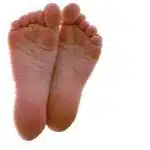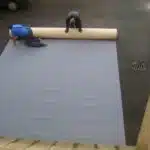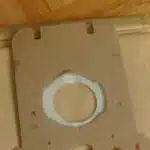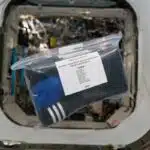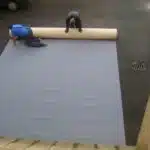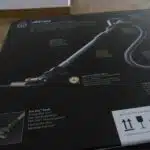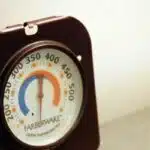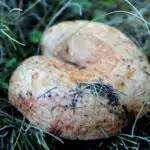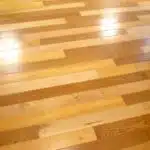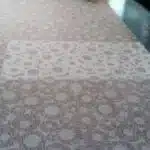As a carpet cleaning expert, I understand the importance of maintaining a clean and sanitized environment for both residential and commercial spaces. Carpets are known to harbor various microorganisms, including bacteria, viruses, and fungi, which can pose a threat to the health of occupants if left unchecked. Therefore, regular cleaning and disinfection of carpets is crucial in promoting a healthy living or working space.
Disinfecting a carpet may seem like a daunting task, but it is relatively simple with the right tools and techniques. In this article, I will be discussing how to properly disinfect your carpets to ensure that they are free from harmful microorganisms. Whether you are dealing with stains or odors caused by pets or spills, or simply looking to maintain a clean and healthy living space, this guide will provide you with practical tips on how to keep your carpets fresh and germ-free.
Understanding The Importance Of Carpet Disinfection
Understanding carpet hygiene is crucial in maintaining a healthy home or office environment. Carpets are a breeding ground for bacteria, germs, and other harmful microorganisms that can cause various illnesses. Regular cleaning of carpets is essential, but it may not be enough to eliminate all the pathogens present. This is why disinfection should be part of your carpet maintenance routine.
Effective disinfection methods are necessary to ensure that your carpets are free from harmful pathogens. One of the most effective methods is hot water extraction, which involves using high-pressure hot water and cleaning solutions to remove dirt, stains, and other contaminants from the carpet fibers. This method also kills up to 99% of bacteria and other microorganisms present in the carpet.
Another effective disinfection method is the use of steam cleaners. Steam cleaners use hot steam to kill germs and bacteria on the surface of carpets. It is an environmentally friendly method that does not involve any chemicals or detergents, making it safe for pets and children. Understanding these methods will help you choose the best approach to disinfect your carpet effectively.
To identify high-risk areas on your carpet, you need to pay attention to areas with heavy foot traffic or places where spills frequently occur. These areas require more attention than others as they are more susceptible to bacteria buildup. By identifying these high-risk zones, you can focus on using proper disinfection techniques on these spots while still ensuring that other parts of your carpet remain clean and hygienic.
Identifying High-Risk Areas On Your Carpet
As a carpet cleaning expert, it is essential to identify high-risk areas on your carpet. The most common contaminants found on carpets are dust, dirt, and allergens. These substances can easily accumulate in areas with high foot traffic, such as hallways or living rooms. Other high-risk areas include spots where food and drinks are frequently consumed or where pets spend most of their time.
Prevention tips can help reduce the occurrence of these contaminants. For example, placing doormats at entrances can prevent soil and dirt from entering the house. Also, avoiding eating or drinking near the carpeted area helps reduce the likelihood of spills and stains. Vacuuming frequently is another effective way to remove dust and allergens that may be present in your carpets.
It is important to note that not all high-risk areas are visible to the naked eye. Hidden sources of contamination such as mold or bacteria can pose serious health risks if left unaddressed. As a result, regular professional carpet cleaning services are necessary to ensure that all types of contaminants are removed from your carpets effectively.
Transition into subsequent section: Now that you have identified high-risk areas on your carpet and taken steps to prevent contamination, it is essential to choose the right disinfectant for your carpet’s specific needs.
Choosing The Right Disinfectant For Your Carpet
When it comes to disinfecting your carpet, choosing the right disinfectant is crucial. There are different types of disinfectants available in the market, and not all of them are suitable for every carpet type. It is essential to select a disinfectant that is compatible with your carpet material to avoid any damage or discoloration.
Here are some common disinfectant types that you can use on your carpet:
- Quaternary Ammonium Compounds (QACs): QACs are effective against various bacteria and viruses and can be used on most carpets.
- Hydrogen Peroxide: This type of disinfectant is excellent for removing stains and odors while also killing germs. However, it may not be compatible with wool carpets as it can cause discoloration.
- Chlorine Bleach: Chlorine bleach is a potent disinfectant but should only be used on synthetic fibers like nylon or polyester. It can cause severe damage to natural fibers like wool or silk.
Apart from these, there are other types of disinfectants available in the market, like alcohol-based solutions or phenolic compounds. Before using any disinfectant, always check its compatibility with your carpet material.
Selecting the right disinfectant for your carpet is just as important as cleaning it regularly. Using an incompatible disinfectant can cause irreversible damage to your carpet’s fibers and color. Therefore, always take care while selecting a product and follow the manufacturer’s instructions carefully when using it.
In our next section, we will discuss how to prepare your carpet for disinfection without causing any harm or damage to it.
Preparing Your Carpet For Disinfection
Now that you have selected the appropriate disinfectant for your carpet, it is time to prepare it for disinfection. Before applying the disinfectant, you need to remove any loose debris from the carpet’s surface using a vacuum cleaner. This will ensure that the disinfectant can penetrate deep into the fibers of your carpet.
Once you have removed all loose debris, you can begin with carpet disinfection methods. The most effective way to disinfect your carpet is by using a steam cleaner. A steam cleaner uses hot water and steam to kill bacteria and viruses that may be lurking in your carpet. Alternatively, you can use a spray bottle to apply the disinfectant directly onto the affected area, but this method may not be as effective as a steam cleaner.
If you prefer DIY carpet disinfection tips, there are several natural ingredients that you can use to create an effective and safe disinfectant solution. For example, white vinegar is an excellent natural cleaning agent that has antibacterial properties. To create a natural disinfectant solution with vinegar, mix one part vinegar with one part water in a spray bottle and apply it directly onto the affected area of your carpet.
| Disinfectant | Pros | Cons |
|---|---|---|
| Bleach | Effective against viruses and bacteria | May discolor or damage carpets |
| Hydrogen Peroxide | Safe for most carpets | May not be as effective as other options |
| Rubbing Alcohol | Dries quickly and doesn’t leave residue | May damage certain types of carpets |
| Vinegar Solution | Natural and safe for pets and children | May not be as effective as other options |
As we move forward with removing stains and spills from your carpet, it’s important to note that regular cleaning is crucial in maintaining clean carpets. Not only does regular cleaning make it easier to remove tough stains later on, but it also helps prolong the life of your carpet. In the next section, we will discuss effective ways to remove stains and spills from your carpet without damaging it.
Removing Stains And Spills From Your Carpet
Like a canvas to an artist, a carpet is the foundation of a room. However, stains and spills can quickly transform that work of art into an eyesore. Carpet stain removal can be a challenging task, but with the right tools and techniques, you can restore your carpet’s beauty.
DIY carpet cleaning tips are widely available online, but not all of them are effective or safe for your carpet. One of the most common mistakes people make when removing stains from their carpet is using too much water. Excessive moisture can lead to mold growth and damage to your carpet fibers. Instead, use a small amount of cleaning solution and blot the stain with a clean cloth.
Here are three essential tips for removing stains and spills from your carpet:
- Act quickly: The longer you wait, the harder it will be to remove the stain.
- Blot, don’t rub: Rubbing can push the stain deeper into the fibers and damage your carpet.
- Test before applying: Before using any cleaning solution, test it on a small inconspicuous area first to ensure it doesn’t cause discoloration or damage.
Before disinfecting your carpet, it’s crucial to vacuum thoroughly to remove any loose dirt or debris that might interfere with the disinfection process. Vacuuming also helps loosen up any deeply embedded dirt that could cause staining if left unattended. By following these simple steps and DIY carpet cleaning tips, you can keep your carpets looking their best for years to come.
Vacuuming Your Carpet Before Disinfection
Before applying disinfectant to your carpet, it is crucial to vacuum the area thoroughly. The importance of vacuuming cannot be overstated, as it removes dirt, dust, and other particles that may hinder the effectiveness of the disinfection process. Additionally, vacuuming ensures that any loose debris will not get trapped in your carpet fibers during disinfection.
However, there are common vacuuming mistakes that should be avoided. One mistake is rushing through the process without giving enough time for the vacuum cleaner to pick up all debris. Another mistake is neglecting corners and edges where pet hair and dust tend to accumulate. These areas should be given special attention using specialized attachments such as crevice tools or brushes.
Taking the time to properly vacuum your carpet before disinfection will save you time and effort later on. By removing all loose particles from the carpet fibers, you can ensure that the disinfectant will penetrate deeply into your carpet without any hindrance. Remember, a clean surface is key when it comes to effective disinfection.
As we have seen, proper vacuuming is an essential step before applying disinfectant to your carpet. Once you have effectively removed dirt and dust from your carpet, you can move on to applying a suitable disinfectant solution. However, remember that this process should not be rushed if you want to achieve optimal results in terms of cleanliness and hygiene. In the next section, we will discuss how to apply disinfectant solutions effectively for maximum protection against harmful pathogens.
Applying Disinfectant To Your Carpet
Imagine a carpet as a beautiful garden that needs constant attention and care. Just like plants need water and sunlight, carpets require regular cleaning to maintain their beauty and longevity. However, unlike plants, carpets can harbor bacteria and viruses that can pose serious health risks to your family. That’s why applying disinfectant to your carpet is crucial in ensuring that it is free from harmful pollutants.
Disinfectant application should always be done after thorough cleaning of the carpet. This will ensure that the disinfectant penetrates deep into the fibers of the carpet, eliminating any germs or bacteria that may have been hiding within. One effective way of applying disinfectant is by using a spray bottle or a pump sprayer. Be sure to read the label instructions carefully before applying any disinfectant.
When it comes to carpet cleaning techniques, there are several methods you can use depending on the type of stain or dirt you are dealing with. However, when applying disinfectant, it is best to use a method that does not involve excessive moisture. This means avoiding steam cleaning or soaking the carpet with water during cleaning. Instead, opt for dry-cleaning methods such as encapsulation or bonnet cleaning which uses minimal moisture and will not damage your carpet fibers.
To proceed with letting the disinfectant set on your carpet, it is important to let it dry naturally for at least 30 minutes before allowing foot traffic on it again. This will give enough time for the disinfectant to work its magic in eliminating bacteria and viruses from your carpet fibers effectively. Once dry, you can vacuum clean your carpet thoroughly to remove any remaining residues left behind by the disinfectant application process. Remember always to follow safety guidelines when dealing with chemicals and wear protective gear such as gloves and masks during application processes.
Letting The Disinfectant Set On Your Carpet
After applying disinfectant to your carpet, it is essential to let it set so that it can effectively penetrate and kill any bacteria or viruses. The amount of time you should allow the disinfectant to sit on your carpet depends on the specific product you are using. Generally, however, most disinfectants require at least ten minutes for optimal efficacy.
During the waiting period, it is important to keep pets and children away from the treated area to prevent accidental ingestion of the disinfectant. Additionally, make sure that the room is well-ventilated to ensure proper drying time for the disinfectant. This also helps to prevent any unpleasant odors that may linger in the room.
Once you have allowed sufficient time for the disinfectant to work its magic, it is time to remove any excess moisture from your carpet. This step is crucial because leaving your carpet damp can lead to mold growth and other issues. You can use a wet-dry vacuum or a clean towel to soak up any remaining moisture. Remember not to scrub too hard as this can damage your carpet fibers.
Removing Excess Moisture From Your Carpet
- Vacuuming is an effective way to remove dirt, dust, and other debris from carpets, as well as any excess moisture.
- Blotting is a useful tool for removing moisture from carpets, as it avoids the potential damage that could be caused by rubbing or scrubbing.
- Fans can be used to dry carpets by creating airflow, which will help to evaporate the moisture.
- The type of vacuum used to remove moisture is important, as some vacuums are better suited for wet and damp surfaces than others.
- The blotting technique should be used with caution to prevent damage to the fibers of the carpet.
- When using fans, it is important to be mindful of their positioning to ensure that the airflow is directed in the right direction.
Vacuum
Vacuuming is an essential step in cleaning a carpet and removing excess moisture. It helps to remove dirt, debris, and other allergens that may be embedded deep within the fibers of your carpet. The benefits of vacuuming are numerous, as it not only removes dirt and debris but also improves the overall air quality of your home.
Choosing the right vacuum is important when attempting to disinfect your carpet. A powerful vacuum with a HEPA filter is recommended to effectively remove allergens and bacteria from your carpet. Additionally, consider the size and weight of the vacuum for ease of use and maneuverability. Lastly, remember to regularly clean or replace the filter in your vacuum to maintain its effectiveness.
Regularly vacuuming your carpets can help prevent mold growth and reduce the risk of respiratory issues caused by airborne allergens. By choosing the right vacuum and using it consistently, you can effectively remove excess moisture from your carpet while keeping it clean and healthy for you and your family. Remember to prioritize regular vacuuming as part of your cleaning routine for optimal results.
Blotting
To effectively remove excess moisture from your carpet, it is important to consider all available methods. While vacuuming can help eliminate debris and allergens, the blotting technique can be used to address stubborn stains and excess moisture. The blotting technique involves using a clean cloth or paper towel to absorb any liquid that may have been spilled on the carpet.
This DIY stain removal method works best when used immediately after a spill occurs. Start by gently pressing the cloth or paper towel onto the affected area, working from the outside inwards. Avoid rubbing or scrubbing the stain as this may cause it to spread further across the carpet fibers. If necessary, repeat this process until all excess moisture has been removed.
By incorporating the blotting technique into your regular cleaning routine, you can prevent mold growth and minimize potential damage caused by water exposure. Remember to act quickly when spills occur and use only clean cloths or paper towels to avoid introducing additional dirt or bacteria onto your carpet fibers. With consistent maintenance, you can keep your carpets clean and healthy for years to come.
Fans
To further improve the effectiveness of removing excess moisture from your carpet, it is important to consider using fans. Fans are an excellent addition to your cleaning routine as they can help speed up the drying process and prevent mold growth. There are different types of fans that you can use depending on your carpet’s condition and the level of moisture you need to remove.
One type of fan that you can utilize is a box fan. This type of fan is ideal for larger areas as it provides a powerful airflow that can cover a wide space. If you’re dealing with a smaller area or spot, a handheld fan or hair dryer can also be effective in drying out excess moisture. Make sure to use these types of fans at a distance from your carpet to avoid causing any damage or creating additional moisture problems.
Incorporating the use of fans into your regular carpet cleaning routine helps ensure that your carpets remain healthy and free from mold growth. Remember to use only clean cloths and towels when blotting excess moisture before turning on any fans to avoid spreading dirt or bacteria across the fibers. By taking extra steps like using fans, you can effectively remove excess moisture from your carpet and prolong its lifespan for years to come.
Drying Your Carpet Properly After Disinfection
After properly disinfecting your carpet, it is crucial to ensure that it dries properly to avoid any further damage. Drying is a critical step in the process of maintaining clean carpets, and there are several steps you can take to ensure that your carpet dries correctly after disinfection.
Firstly, open all windows and doors to allow proper ventilation. Fresh air helps to dry the carpet faster and also removes any unpleasant odor from the disinfectant. If possible, use a fan or dehumidifier to circulate the air around the room for faster drying.
Secondly, remove any excess moisture using a wet vacuum cleaner or blotting paper. Be sure not to rub the carpet as this may damage its fibers. Instead, place a clean towel or paper on top of the damp spot and press down gently with your hands or feet until all moisture is absorbed.
Lastly, avoid walking on the damp carpet until it is completely dry. This will prevent re-soiling and damage caused by foot traffic while still wet. It’s best to wait at least six hours before walking on it again.
By following these steps, you can ensure proper disinfection and maintenance of your carpet’s cleanliness. Proper disinfection followed by effective drying ensures that the carpet stays free from germs and bacteria for an extended period. In addition, regular cleaning helps maintain good indoor air quality by removing allergens that can cause breathing problems such as asthma and allergies.
Maintaining Clean Carpets With Regular Disinfection
To maintain a clean and healthy carpet, regular disinfection is crucial. It not only removes the germs and bacteria but also prevents future infestations. However, before disinfecting your carpet, it’s essential to vacuum it regularly to remove any debris or dirt particles that might be trapped deep in the fibers.
Regular vacuuming is vital because it helps prevent the accumulation of dust and dirt on your carpet. This build-up can cause allergies or even contaminate the air you breathe. Therefore, vacuuming once or twice a week can help keep your carpet looking good and smelling fresh.
Many DIY carpet disinfectant recipes are available online, but some of them may not work effectively. Hence, before using any recipe online, make sure to do thorough research and read reviews from other users who have tried the method. Alternatively, you can use commercial disinfectants that are readily available in stores near you. Just remember to follow the instructions on the label for effective results.
Transition: While regular vacuuming and DIY disinfectant recipes can help maintain a clean carpet, sometimes professional cleaning services are necessary for deep cleaning and complete sanitization of carpets.
Professional Carpet Disinfection Services
To ensure that your carpets are properly disinfected, it is recommended to hire professional carpet disinfection services. These services have several benefits over DIY carpet disinfection. Firstly, professionals use specialized equipment and chemicals that can more effectively remove dirt, grime, and bacteria from the carpet fibers. Additionally, they have the experience and training necessary to identify the specific type of cleaning solution needed for your carpet’s material.
Cost comparison is also an important factor when considering whether to opt for professional or DIY carpet disinfection. While DIY methods may seem more cost-effective initially, they often require multiple attempts and can lead to irreversible damage to the carpet fibers. Professional services may come at a higher cost but offer long-lasting results that save you money in the long run.
In summary, hiring a professional service for carpet disinfection has numerous benefits over attempting DIY methods. Not only do they employ specialized tools and chemicals for effective cleaning but also provide expert guidance on how best to maintain your carpets’ cleanliness while ensuring their longevity.
Next, we will discuss eco-friendly disinfection options for your carpets that are both safe for the environment and effective in eliminating harmful bacteria and viruses.
Eco-Friendly Disinfection Options For Your Carpet
Professional carpet disinfection services are a great option for those who want thorough and effective cleaning. However, some people may be concerned about the chemicals used in these services. For those who prefer eco-friendly options, there are natural carpet disinfection methods available.
One eco-friendly disinfectant alternative is using vinegar and baking soda. Mix equal parts white vinegar and water in a spray bottle and apply to the affected area. Then sprinkle baking soda on top of the solution and let it sit for about 20 minutes before vacuuming it up. This method is effective in removing stains and odor while also being safe for pets and children.
Another natural carpet disinfection method is using essential oils. Add a few drops of tea tree oil or lavender oil to hot water and use this solution to clean your carpets. Both of these oils have antifungal and antibacterial properties that can help eliminate germs from your carpets while also leaving behind a pleasant scent.
Incorporating eco-friendly disinfection options into your carpet cleaning routine not only benefits the environment but also helps ensure the safety of your home’s inhabitants. By using natural methods, you can effectively eliminate harmful bacteria without exposing yourself or your loved ones to toxic chemicals commonly found in commercial products. In the next section, we will discuss tips for preventing future carpet contamination through regular maintenance practices.
Tips For Preventing Future Carpet Contamination
Imagine your carpet as a blank canvas that needs to be maintained and preserved. Just like a painting, it requires attention, care, and protection to keep its beauty and value intact. After disinfecting your carpet, the next step is to prevent recontamination. Here are some tips on how to achieve long-term maintenance.
Firstly, regular vacuuming is essential in keeping your carpet clean and free from dirt and debris. Dirt particles can act as an abrasive material that wears down the fibers of your carpet. By vacuuming at least once a week, you can remove these particles before they cause any damage.
Secondly, avoid placing shoes near or on top of your carpet. Shoes can bring in soil and germs from outside which can lead to contamination of your carpet. Encourage everyone in your household to take off their shoes before entering the house or walking on the carpeted areas.
Lastly, consider investing in professional cleaning services at least once every year or two years depending on usage. Professional cleaners have the necessary equipment and expertise to deep clean carpets thoroughly, removing any build-up of dirt or bacteria that regular cleaning cannot remove. This will help prolong the lifespan of your carpet while keeping it hygienic.
To ensure that your newly disinfected carpet remains clean and germ-free for as long as possible, it’s important to follow these tips for preventing future contamination. However, if you still have questions about how to maintain your carpet’s cleanliness or want more information about disinfecting carpets effectively, read on for frequently asked questions about carpet disinfection.
Frequently Asked Questions About Carpet Disinfection
Carpet disinfection is important for maintaining a clean and healthy living environment. While regular vacuuming can remove most of the dirt and dust from the carpet, it cannot eliminate bacteria, viruses, or other harmful microorganisms. Therefore, it is crucial to disinfect your carpets periodically.
There are two ways to disinfect your carpets: DIY disinfection and professional services. DIY disinfection involves using household items such as vinegar, baking soda, or hydrogen peroxide to clean your carpets. However, these methods may not be effective in eliminating all types of germs and may even damage the carpet fibers if not used correctly. Professional services, on the other hand, use specialized equipment and products that are designed to kill a wide range of pathogens without harming the carpet.
If you decide to go for professional services for carpet disinfection, make sure to choose a reputable company with experienced technicians who use eco-friendly cleaning solutions. Moreover, ask about their cleaning process and what measures they take to ensure that their equipment and tools are properly sanitized between jobs. By taking these precautions, you can ensure that your carpets are not only disinfected but also safe for you and your family.
- Regular carpet disinfection can prevent the spread of diseases.
- DIY disinfection methods may not be effective in killing all types of germs.
- Professional services use specialized equipment and eco-friendly solutions that are safe for carpets and humans.
- Choosing a reputable company with experienced technicians is crucial for effective carpet disinfection.
By following these guidelines for carpet disinfection, you can maintain a clean living environment while protecting yourself against harmful microorganisms. Remember that prevention is always better than cure when it comes to health-related issues. Therefore, do not wait until you or someone in your family falls sick before taking action. Hire a professional service or learn how to do it yourself today!
Conclusion
Carpet disinfection is an essential part of maintaining a clean and healthy home. Understanding the importance of disinfecting your carpet, identifying high-risk areas, choosing the right disinfectant, and preparing your carpet for disinfection are all crucial steps in ensuring that your carpet remains free from harmful bacteria and viruses. Removing stains and spills promptly can also help prevent contamination.
Professional carpet disinfection services are available for those who want to ensure that their carpets are thoroughly cleaned and disinfected. Eco-friendly disinfection options are also available for those who prefer environmentally friendly solutions. Finally, taking preventative measures such as removing shoes before entering the house and regularly vacuuming your carpet can help prevent future contamination.
As a carpet cleaning expert, I highly recommend regular carpet disinfection to maintain a clean and healthy home. By following these steps and taking preventative measures, you can ensure that your family is safe from harmful bacteria and viruses. Remember that prevention is key in maintaining a clean home, so don’t hesitate to take action today!
Image Credits
- “03dec31 Pussy on carpet” by xjyxjy (featured)





